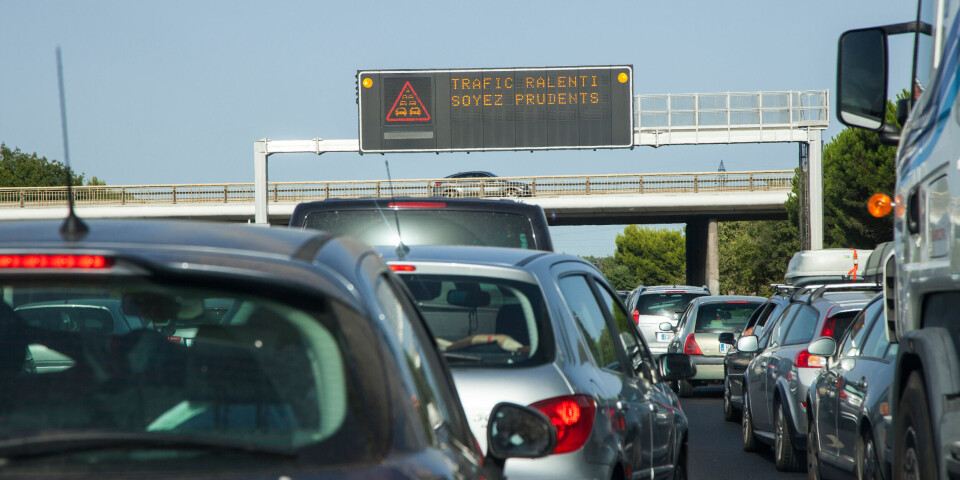Another French village bans drinking water for vulnerable people
Official advice has been issued on who is affected by the ban and why
The water can be used for cooking and washing, but not for drinking
New Africa/Shutterstock
Drinking tap water has been banned for vulnerable people in another village in France due to pollution levels, with 17 communes in the same region also affected by the same ‘forever chemicals’.
The village of Tendon in Vosges (Grand Est) has become the latest in the area to ban vulnerable people from consuming the tap water, in a prefectural decree to that effect on October 20.
This is because the tap water has been identified as having a too-high concentration of PFAS (perfluoroalkyl and polyfluoroalkyl substances), also known as “forever chemicals”.
"The total concentration of the 20 main PFAS is on average 0.14 micrograms per litre,” stated the Vosges prefecture in a statement about Tendon. The maximum allowed, as per EU regulation, is 0.1 micrograms per litre.
Vulnerable people are defined as:
The elderly and very frail
Children under two
Pregnant or breastfeeding women
Immunocompromised individuals (e.g. those undergoing treatment such as chemotherapy, or people with chronic immune conditions)
The official advice from the Vosges prefecture website is:
Tap water should no longer be used for drinking, or for preparing baby bottles.
The use of domestic filtration devices (filter jugs, etc.) is not recommended, as their effectiveness against PFAS remains to be proven.
Based on current scientific knowledge, all other uses remain permitted (cooking food, washing fruit and vegetables, personal hygiene, brushing teeth, cleaning toilets, watering plants, using swimming pools, etc).
There is no suggestion that drinking water in the contaminated areas in France will lead directly to health problems, as the permitted levels are already low. However, when the levels do exceed the permitted amounts, the local prefecture will take action.
Residents living in the affected area are receiving one large bottle of drinking water per day for free, from the local authority. Locals can ask for more information about free water from the Tendon mairie or the water authority the Syndicat Intercommunal des Eaux de Faucompierre Tendon Xamontarupt.
Nearby commune issue
It comes six days after the village of Arrentès-de-Corcieux - which is around 20 km away - issued a similar warning on October 14. PFAS levels there are even higher, with 0.73 micrograms found of PFAS per litre of water. The drinking water ban there is for everyone, not only vulnerable individuals.
Authorities have also identified 17 other municipalities with similar pollution issues in the departments of Ardennes and Meuse.
Action plan
The Rhin-Meuse water agency l’Agence de l’eau Rhin-Meuse and the health agency ARS Grand Est are now working with local authorities to restore water quality. Updates are expected to be sent to the local population shortly, along with notifications when the drinking water is once again safe to drink.
More information on action being taken against PFAS, and the levels in sample tap water in affected communes in the region, can be found on the Vosges Prefecture and Grand Est ARS websites.
What are PFAS?
PFAS are sometimes known as ‘forever chemicals’, because they are chemicals that come primarily from materials known as ‘non-stick’ or grease-repellent (e.g. the manufacture of non-stick kitchen pans and utensils).
They have been found to have harmful effects on health (including in the incidence of cholesterol levels, cancer, and effects on fertility and foetal development). They are often found in water sources, the air, and in the soil.
It is not possible for individuals to directly and precisely assess how the level of PFAS translates into health risks, as the toxicity of PFAS can vary and there is still limited data or consensus available on the toxicity of certain individual substances.
PFAS and microplastic pollution are often cited as a major reason that some people do not drink tap water, and avoid using items made of plastic or which have non-stick materials when cooking (for example, using stainless steel utensils or ceramic pans instead of non-stick saucepans).
Where in France has PFAS contamination?
It comes just a few months after ‘fragile’ residents in 11 Haut-Rhin (Grand Est) communes were advised not to drink the tap water due to pollution concerns. This warning came into effect on May 5, and is expected to remain in place until at least December 31.
Elevated PFAS levels have also been detected in bottled water by Perrier, Vittel, Hépar, and Contrex.
In July this year, the French government published a map* showing PFAS surveillance after an alert was raised over high PFAS levels, including in towns near Lyon and south-west France.
“For the first time, [people across France] will have access to accurate, up-to-date information on the results of monitoring these pollutants throughout the country,” said then-Ecological Transition Minister, Agnès Pannier-Runacher, in a press release published on July 31.
*Please note that the map linked to above shows the number of substances tracked and the levels of individual substances found at each site, but does not provide a direct interpretation of the results




























